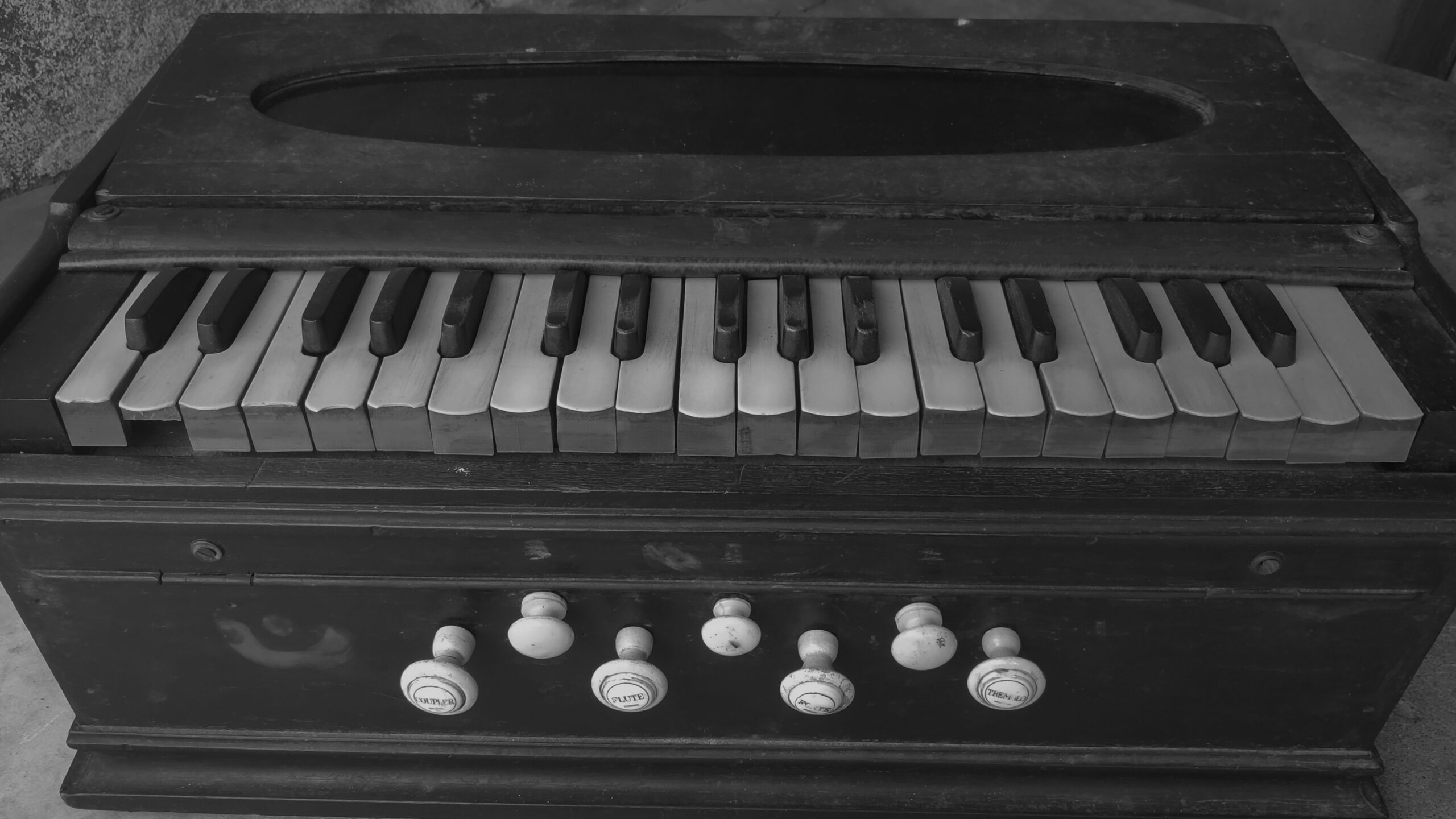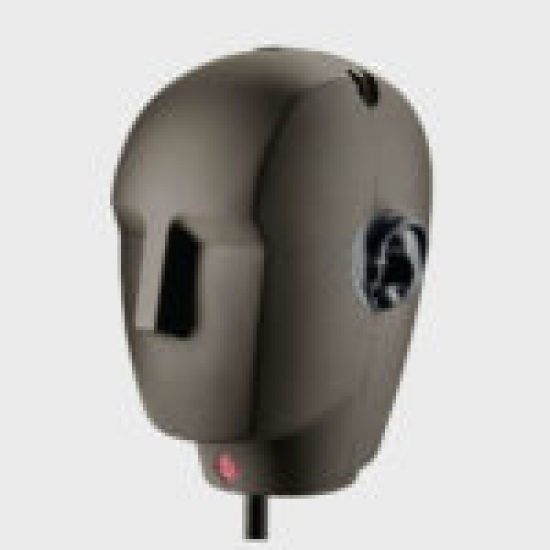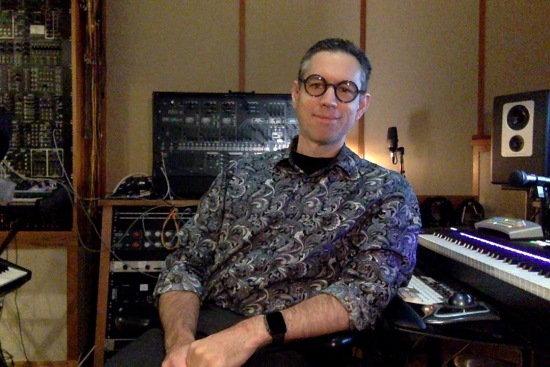
The story
History :
German Jubilate Harmonium Reeds are brass reeds used in Indian harmoniums that were manufactured in Germany between 1911 and the early 1960s. The reeds were originally manufactured for American style suction reed organs being manufactured in Germany on machinery that was bought second hand in Chicago in the United States and imported to Germany by Karl Mannborg son of Theodor Mannborg. Mannborg owned the factory in Pegau, Germany supplying organ parts for American style suction reed organs. Germany (and later in England) was the only country in Europe that was manufacturing American style suction reed organs while the rest of the reed organ industry in Europe was making pressure reed Harmoniums.
In the 1930s and 1940s the demand in Europe for reed organs and harmoniums significantly declined and the factory started exporting the reeds to India where Indian style hand-pumped harmoniums, works on an air pressure system, had become very popular creating the demand and a market for the German harmonium reeds.
In the early 1960s the factory making the German organ reeds used in the Indian sub-continent for harmoniums, having changed hands several times and now situated in post World War II East Germany (GDR), was taken over by the communist government and the reed making machinery was scrapped. This marked the end of German reed production.
Today German reeds are highly prized and sought after by players of Indian harmoniums around the globe.
For more informations, please visit
https://en.m.wikipedia.org/wiki/German_Jubilate_Harmonium_Reeds
Availability of German Jubilate Harmonium Instrument :
Basically, a harmonium is used as a lead instrument in many form of music such as Hindustani Music, Sufi Music, Kawali Music, Indian origin devotional (Bhajans) & desi songs. My father Late Gosto Chandra Patro (passed away on 12-02-2022) was very popular among the students for training Carnatic Music on Vocals, Veena, Bansuri, Harmonium. He is also a Music Therapist and an Ayurvedic Doctor. He also did business in trading the musical instruments such as Bansuri (Indian Origin of Flute) and Harmonium. In 1975, he purchased German made reeds installed in Indian origin Harmonium from a Veterinary Doctor at 250 Indian Rupees. The Veterinary Doctor purchased from the authorised seller at 100 Indian Rupees. Because of its unique sound, he kept it for his personal use, for training his students and for performing at reputed entertainment programs. But for the last 20 years, the harmonium is not being used at all. Please note that Indian Musicians really care for their respective musical instruments.
Audio Production :
For Sound Recording, the Author / Samplist has used Shure SM7B and Audix OM2 moving coil microphones. Though it is an indoor recording setup, he took off the windshield of Shure SM7B and also took off the grill of Audix OM2. The harmonium has a leather flap over the key release holes to prevent from dust particles. The leather flap dampens the direct sound coming from the key release holes. With the leather flap, the harmonium sound very soft ( p ). But without the leather flap, the harmonium sounds very loud ( f ) because of the direct sound from the key release holes. He has used Apollo Twin MKII Duo manufactured by Universal Audio. The whole audio production is completed using Logic Pro X Digital Audio Workstation. After audio post-production of the recorded audio samples of the Harmonium, he checked its pitch by taking reference of one of the built-in instrument packages on Logic Pro X and he found that the recorded Harmonium Samples was sounding 25 cents higher than built-in instrument library. So, he pitched down the recorded harmonium samples by 25 cents, completed the audio signal processing by taking advantage of emulated plugins such as Fairchild 670, LA2A, FET1176, Pultec Pro…etc Manufactured by Universal Audio and Harrison Consoles. and then exported those processed audio samples.
About the Author :
The Author, Girish Patro, is an accomplished Music Production Engineer and a well known Trainer in Sound Engineering and Music Production.
He worked as a Sound Engineer Assistant at Omgrown Music Studio Mumbai who provide Music Production services to Ad Film Industry and Indian Cinema Industry aka Bollywood Industry. His work and workflow of each assigned task are appreciated by Music Performers and Record Producers.
He has trained many more sound engineers, music performers, music educators at “Sound Engineering Academy” Trivandrum, “Centurion University” Bhubaneswar and “Mumbai Audio & Music Academy” Lucknow, who are currently working at the Music Industry in India and abroad and published books about Sound Engineering, Music Production and Music Business.
For more details about the author/samplist, please visit
LinkedIn Profile: https://www.linkedin.com/in/girishpatro/
Pianobook Profile: https://www.pianobook.co.uk/profile/girishpatro
Amazon Author Profile: https://www.amazon.in/Girish-Patro/e/B099PVB7BD
Reviews for German Jubilate Harmonium
- Sound
- Character
- Playability
- Inspiration
- GUI
Leave a review to let others know what you thought of the instrument!
Cool
Has a lot of character, great fun to use. Not super versatile though
Really unique sound but needs some work
The sound itself is recorded really well and sounds really awesome. Its a unique instrument and its awesome to have these rare instruments on pianobook. It makes me think of the movie Ratatouille. Unfortunately there are some programming issues here also mentioned by others. Mainly for me you can hear the samples re triggering which is jarring and immediately noticable. It just feels wrong because its at odds with what we know this is supposed to sound like. Theres alot of potential here because this is am awesome sound. If the programming could be worked on it a bit that would be really awesome.
Unique historical instrument
I was really happy to be able to play around on this instrument, that I likely will never be able to play the real thing. Unfortunately, I may echo the other reviews. The full range preset can totally be used in combination with some other instruments, reminds me of an accordion sound. But there are some issues with the looping for sure, which make long sustained chords sound very rough when they restart. If used for a melody, it could take center stage with the unique sound, but it's sound is small obviously a small instrument, and the melody couldn't have a lot of quick notes since there is no ability to shorten the attack. Thanks for the opportunity to try out the interesting instrument!
Nice sound but unable to shine
This instrument sounds nice, but unfortunately there are some issues holding it back. There are some noises included in the samples that produce a very noticeable deep click when looping, and that makes it sound very artificial. On the full range patch, the notes at the very edges of the playable range are very delayed and that can be very hard to deal with, especially if we are talking about performing on it. It is playable though, but you will have to find a way to move around those issues.
Sound concept
The concept behind this sound is good. The instrument itself seems to be in good working order, and generally in tune. It was well recorded. Unfortunately, the attack is really mushy, and without an attack control in Decent Sampler, it's not easy to remedy. It sounds like there's an obvious loop point in the samples, but then the sound stops looping, so it must be that there's just some odd artifact in some of the samples. The sound is mapped very low on the keyboard. This instrument has potential, but needs some tweaks to be really great. This is a great first attempt at sampling, and I hope to hear more from this samplist in the future.





